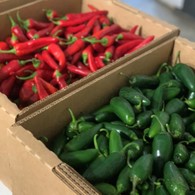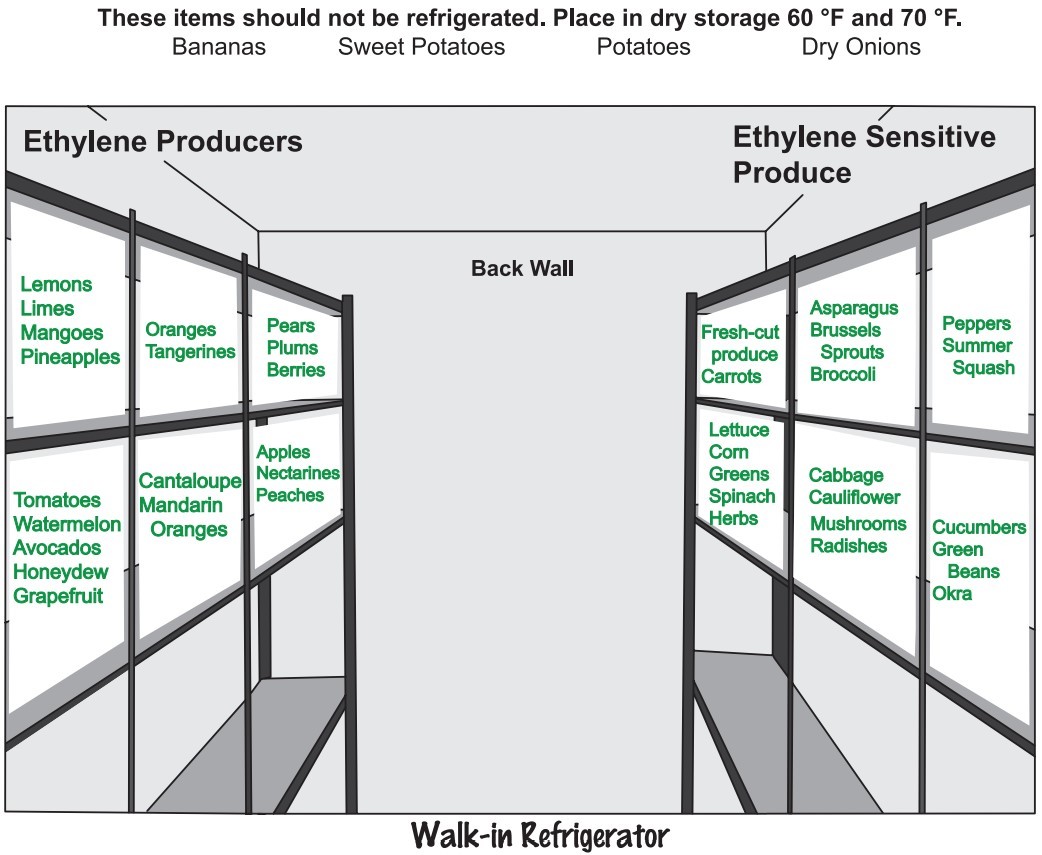FDPIR Self-Determination Demonstration Project Expansion (Round 2)
The USDA Food and Nutrition Service (FNS) is soliciting a second round of proposals for the Food Distribution Program on Indian Reservations (FDPIR) Self-Determination Demonstration Project through a new Federal Register notice that was published October 18, 2022. Through the demonstration project, Tribal Organizations administering FDPIR can enter into self-determination contracts with USDA to purchase their own foods for the FDPIR food packages distributed to their Tribal members who participate in the program. This demonstration project is authorized under The Agriculture Improvement Act of 2018 (P.L. 115-334), also known as the 2018 Farm Bill.
Response to this Federal Register solicitation is available to Tribal Organizations that administer FDPIR and have not previously been awarded a self-determination contract through the demonstration project. Tribal Organizations will be selected on a competitive basis and funding will be awarded through a self-determination contract. Eligible Tribal Organizations are encouraged to apply for FDPIR Self-Determination Demonstration Project funding by submitting a proposal for participation by January 31, 2023. Information about eligibility, the criteria for participation, and the process for submitting a proposal is available in the FNS Solicitation of Proposals, published in the Federal Register at this link.
The FDPIR Self-Determination Demonstration Project:
- Supports Tribal self-governance by allowing participating Tribes to purchase similar foods of their choosing, supporting Tribal dietary preferences;
- Allows Tribes to purchase foods through commercial vendors of their choice;
- Supports Tribal economies as Tribes may choose to contract with local, regional, and/or Tribal vendors; and
- Provides FNS with an opportunity to see how Tribal procurement may work under a food distribution program model across region, program size, and food selection.
For more information visit this website. Also, check out a new video showcasing the Oneida Nation / Menominee Indian Tribe of Wisconsin self-determination demonstration project, provided courtesy of The Self-Governance Communication & Education Tribal Consortium (SGCETC) at this link.
Questions about the Federal Register notice may be submitted to FDPIR-RC@usda.gov.
Successful First Year of the FDPIR Self-Determination Demonstration Project
In September 2021, USDA’s Food and Nutrition Service (FNS), in collaboration with DOI’s Bureau of Indian Affairs (BIA), awarded seven self-determination contracts to eight FDPIR Tribal organizations participating in the FDPIR Self-Determination Demonstration Project, to carry out project activities in FY 2022, 2023, and 2024. Through the demonstration project, Tribal organizations are able to select one or more foods that they would like to procure for inclusion in the FDPIR food package; to identify the food(s) in the food package that they would like to supplant with the Tribally procured food(s); to establish contract(s) with a vendor(s) to procure the selected food(s), and to distribute the Tribally procured food(s) alongside other USDA-provided foods in the FDPIR food packages distributed to their Tribal members. As of September 2022 -- only one year into project implementation -- all eight Tribal organizations participating in the project are distributing some or all of their planned foods which include a variety of meat, fish, grains, and fresh produce items.

Throughout FY 2022, FNS staff visited several participating Tribes to learn more about their contracting activities and to meet involved vendors. In April 2022, FNS staff visited Oneida Nation and Menominee Indian Tribe of Wisconsin. The two Tribes are working on a joint project focused on purchasing and distributing Tribally-procured ground beef, bison, beef roast, white fish, lake trout, apples, and wild rice. The picture shows wild rice grown and processed by Spirit Lake Native Farms; Oneida and Menominee purchase and distribute the wild rice to FDPIR participants with self-determination contract funds.
|
|
In July 2022, FNS staff traveled to the Chickasaw Nation, where demonstration project funds are being utilized to purchase and distribute ground beef, roast beef, dry hominy, stew meat, and pecans. The beef products shown come from Rolland Ranch Beef, LLC, a Tribally-owned and family-operated ranch in Checotah, Oklahoma.
Photo credit: Chickasaw Nation
|
|
 |
 |
|
In August 2022, FNS staff visited counterparts at the Alaska Native Tribal Health Consortium (ANTHC). ANTHC administers FDPIR in collaboration with 21 different Tribes in the State of Alaska, and is purchasing and distributing Alaskan cod, halibut, and potatoes through the demonstration project. Kodiak Island WildSource, a business owned and operated by the Sun’aq Tribe of Kodiak, processes and packages the fish provided through the project.
Photo credit: Christopher Sannito
|

In September 2022, FNS visited the Mississippi Band of Choctaw Indians. Through the demonstration project, the Tribe is purchasing and distributing a variety of fresh vegetables from Choctaw Fresh, an organic produce farm located on the reservation. Turnip greens, collard greens, yellow squash, tomatoes, tomato berries, bell peppers, cucumbers, and peppers are provided to FDPIR participants through the project.
|
Tribal Consultation on Rulemaking for FDPIR, WIC, CNP, and SNAP
USDA invites Tribal Leaders to a virtual Tribal consultation on November 8, 2022. The purpose of the consultation is to receive information and provide feedback on five rule revisions to the Food Distribution Program on Indian Reservations (FDPIR), Special Supplemental Nutrition Assistance Program for Women, Infants, and Children (WIC), Child Nutrition Programs (CNP), and Supplemental Nutrition Assistance Program (SNAP). Details for the virtual consultation are below:
-
November 8, 2022, 12:00pm-4:00pm EST: Tribal Consultation on Five Program Rule Changes. Please register here by November 8, 2022. After registering, Zoom will send a confirmation email with information on how to connect to the meeting.
- If you experience technical difficulties registering through Zoom, please contact Jimmy Nguyen at jimmy.nguyen@usda.gov.
- Tribal Leaders who cannot attend and wish to send a proxy should notify the USDA’s Office of Tribal Relations (OTR) by November 8, 2022. Please contact your FNS Regional Office with any questions and/or to request a proxy form.
- The agenda and registration information will be posted on the OTR website here.

FY 2023 FDPIR Income Standards (Exhibit M)
At the beginning of each Federal fiscal year (FY), FNS posts the updated net monthly income standards (Exhibit M) for FDPIR. These income standards are effective October 1, 2022.
The net monthly income standard for each household size is the sum of the applicable Supplemental Nutrition Assistance Program (SNAP) net monthly income standard and the applicable SNAP standard deduction. Exhibit M of the FNS Handbook 501 also includes allowable income deductions for earned income, dependent care, child support, medical expenses, home care meals, and shelter/utility standard deduction by Region.
The FY 2023 net monthly income standards were disseminated by the FNS Regional Offices in September, and are available on the FNS Handbook 501 page. Please reach out to your FNS Regional Office with any questions.
|

Steps for Receiving USDA DoD Fresh Produce and Reporting Issues
When USDA DoD Fresh produce is delivered, these are the steps your distribution staff should take for receiving and receipting produce, which includes how to report any issues with produce availability, delivery or quality. It is important to document and report any issues, as this information is needed by the Defense Logistics Agency (DLA) to hold the vendor accountable to contract requirements.
- Take time to examine produce at time of delivery.
- Document all issues on the delivery document (bill of lading) and when you receipt for the order in the Fresh Fruit and Vegetable Ordering and Receipt System (FFAVORS).
- Put the produce back on the truck if it is not U.S. grown produce, if the produce does not meet U.S. No.1 quality, or if more than 10% of the product per carton has scorable defects. If there are no markings, assume the produce is U.S. grown.
- Take clear photos of any defective produce, and include a photo of the carton label and markings.
- Verify quantity received is the quantity ordered, note this on the delivery document and in FFAVORS and include any issues (produce not received and product returned).
- Immediately report issues to the produce vendor, the DLA representative, and FNS Regional Office. If needed, request that the vendor send replacements for produce items not received or returned due to quality or not U.S. grown.
- Receipt for produce in FFAVORS within 5 business days to ensure vendor promptly receives payment.
Notify the vendor at least 24 hours in advance of the produce delivery day of any holiday, weather or building closures, and when distribution staff will not be available to accept delivery of produce.
|
Produce Safety Resources
These produce safety resources provide information and best practices on receiving and storing fresh produce to help ensure that program operators and participants receive and use produce items that are high quality and safe. Use the following links to view and download these resources:
Produce Storage Chart
This chart provides information on the storage of fresh produce to maintain its quality and safety, including ideal temperatures and locations. Although the chart is based on a walk-in refrigerator and contains produce items not available through FDPIR, the information provided can also apply to other types of equipment and can be useful when storing produce at home!
 Produce Information Fact Sheets
These fact sheets provide information on various produce items including apples, broccoli, carrots, grapes, lettuce, oranges, squash, and tomatoes. Topics include seasonal availability and guidelines for receiving, storage, and handling.
Working Together to Improve IFMS
To ensure the Integrated Food Management System (IFMS) meets the needs of Tribes to support FDPIR operations, the IFMS User Group was formed in early 2022. IFMS User Group members have the opportunity to share new issues and requests for group discussion.
To participate as a member of the IFMS User Group, or for more information, please email Katie Clifford.
Mobile App:
The Transition Team has developed the USDA IFMS mobile app, a streamlined version of IFMS intended to efficiently conduct food distribution at ITO tailgate sites where there is no internet connection.
The mobile app syncs data with the web-based application. Users transfer IFMS inventory from the main warehouse to the mobile app inventory before tailgating and transfer remaining inventory back to the main warehouse upon return.
This November, a volunteer group of FDPIR programs will participate in a soft launch of the USDA IFMS mobile app as first adopters and provide feedback to the Transition Team.
Certification Module:
The Certification Module for IFMS is currently under development, with a planned launch in February 2023.
Upcoming Release and More Information:
IFMS 1.12.0 Release is planned for mid-October. QuickScan functionality has been improved to allow users to scan or manually enter and search for materials without switching modes.
The Transition Team is happy to provide demo sessions to interested FDPIR programs on the most recent IFMS release enhancements as well as progress on the USDA IFMS mobile app and Certification Module.
|